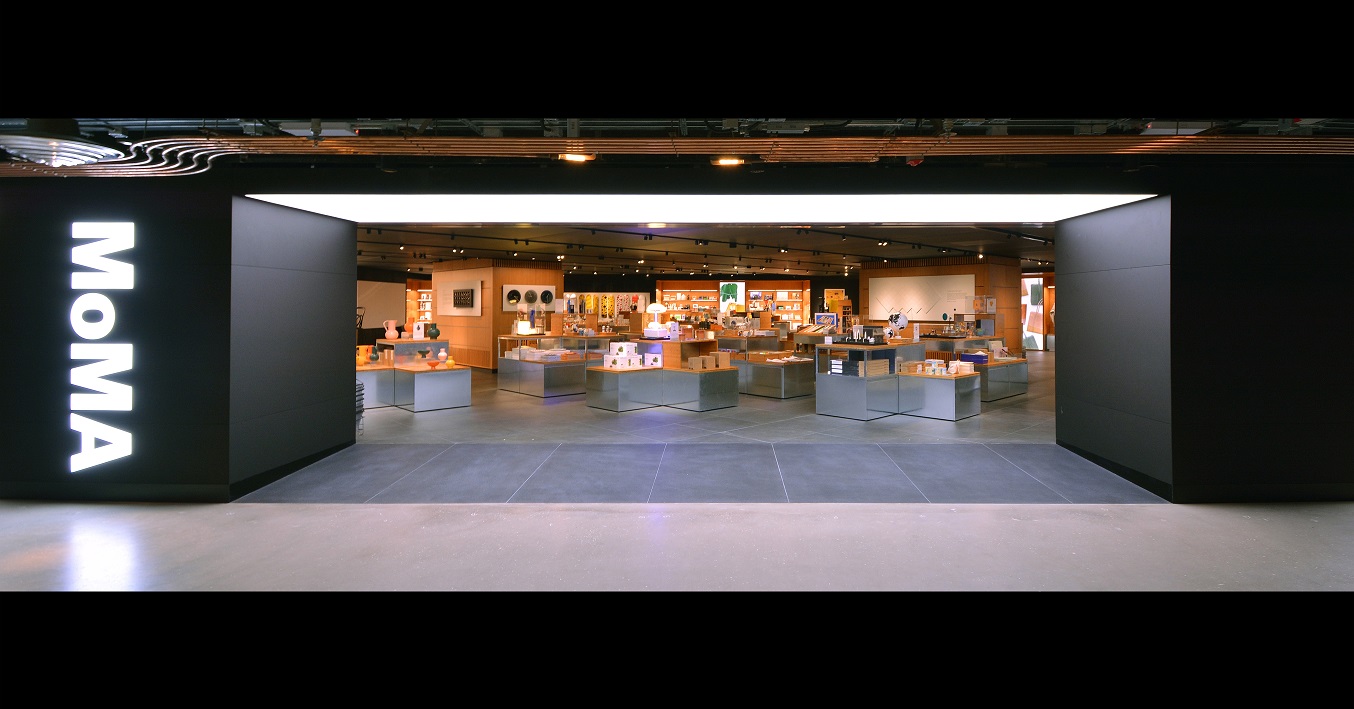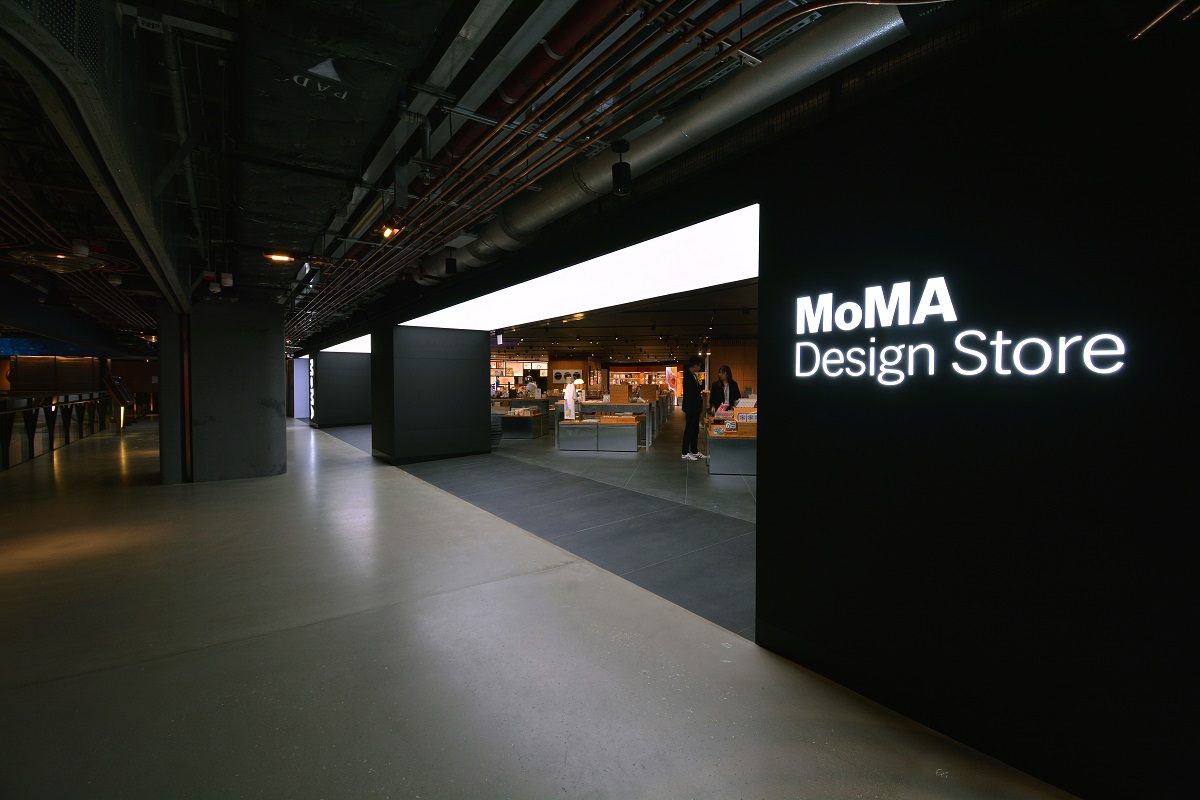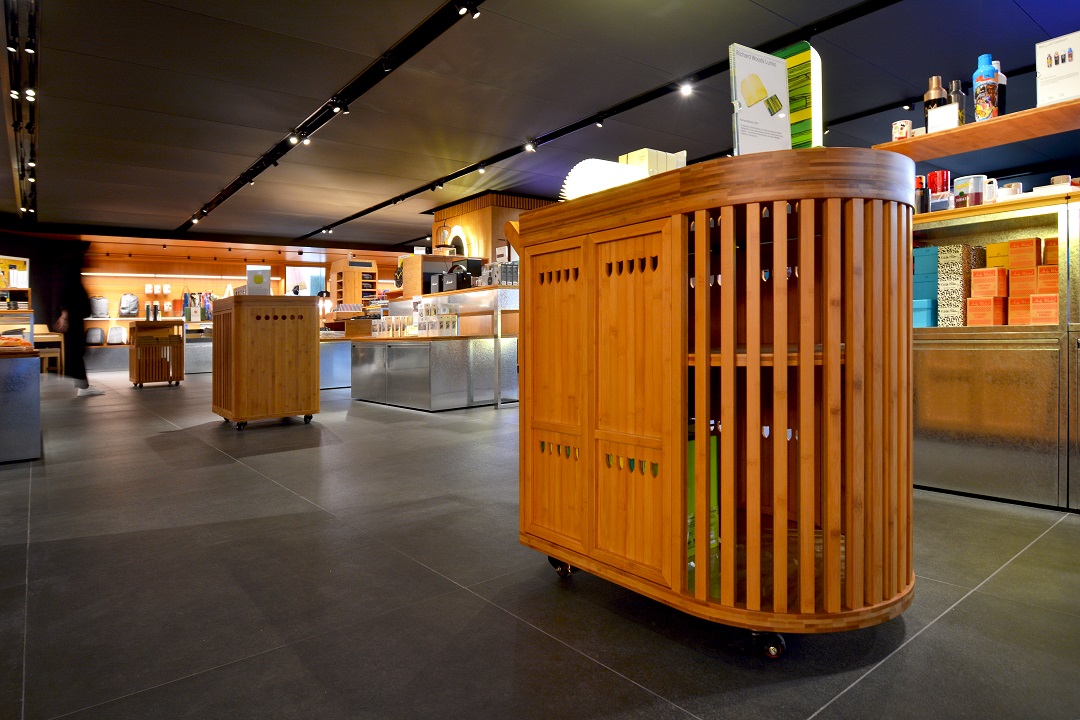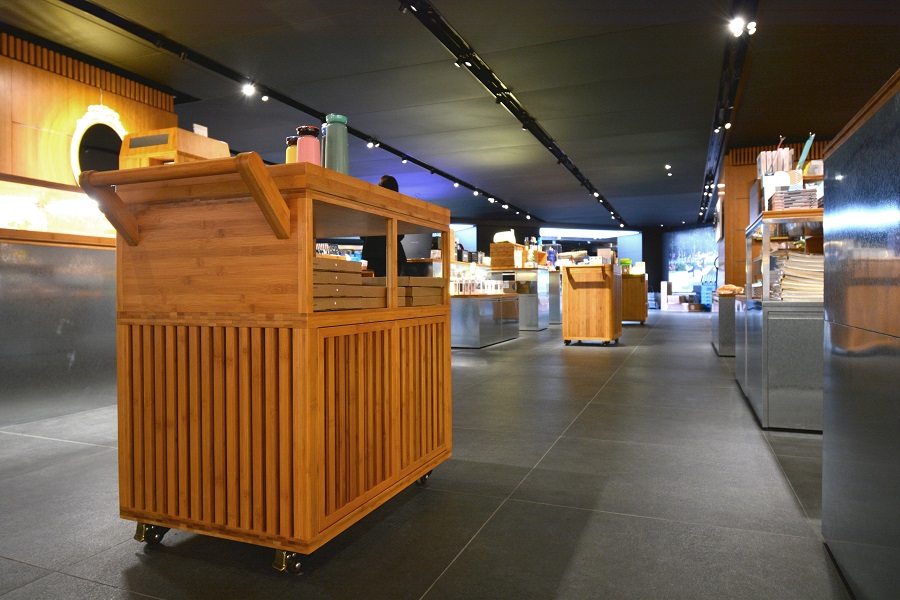Hong Kong, 2019
Overlooking Victoria harbour in the recently completed K11 Musea, Museum of Modern Art Design Store Hong Kong is the newest cultural destination for the best global collaboration between modern art and creative design.
At almost 600 sqm, the Hong Kong store is the current largest MoMA Design Store in Asia. Besides echoing our ideological and aesthetical compatibility with MoMA & K11, it was essential to reflect, reinterpret and represent locality of Asia’s blooming metropolitan city in the modern context. The store design embodies unique Hong Kong Spirit by transforming collective values and memories in homage to our cultural heritage into aesthetical expression - through material exploration, maximised flexibility, and traditional workmanship.
A distinctive colour and material system is employed to achieve retail clarity for the overall enhancement of the shopping experience and retail management; namely bamboo for products and display, grey for store operation-related areas, and the classic black and white for the reinforcement of the MoMA identity.
Upon arrival, customers are greeted with an exposed shop front which spans across 40m. This monolithic portal frame not only draws customers in from across the mall atrium, but also accentuates MoMA’s signature black and white brand identity. This attribute continues in the adjacent spill-out area where prints and featured products are displayed, or pop-up stores with collaborating brands are housed. The entire area could easily be converted into an event space for design workshops and talks, tailored to the occasional collision of inspiration and creativity.
The main store area, which is demarcated by the gridded grey floor, is divided with maximised triangulation to enhance spatial dynamics of the customer experience. The divided recessed quadrants along the peripherals are “basecamps”, and the main triangles within the centre are categorised as “the plaza”. The gridlines mimic a chess board, with fixtures as repeating chess pieces which could be arranged flexibly. This allows for a constant change of retail landscape tailored to different possibilities.
The basecamp closest to the entrance nests all the MoMA publication and exhibition material. The bespoke furniture wall, which duals as the book shelf, is a statement piece converging the best of the MoMA identity and local practicality. The incorporated seating space for readers is a twist on the tight seating in local cafes - the cha chaan teng.
Above the plaza is a terraced ceiling of grey tinted and frosted mirror. The specific material was chosen to create a virtual sense of doubled ceiling height and at the same time obscure excessive reflections.
The standard fixture takes form of a 750mm x 750mm cube with multiple tiers: storage, shopping, display, and facilitating accessories. There are countless combinations in which one could stack these different tiers, thus providing extreme flexibility in adapting to all operational circumstances.
The display tier – the tray in particular, draws its inspiration from the mahjong table – an essential item in any traditional household. The social, cultural and economic influence of the mahjong table is indispensible to the local Hong Kong spirit – it could almost be considered as a cultural artefact. Accustomed to the limited footprint of an average household, the mahjong tray could be transformed into a dining table by placing a layer of recycled paper on top. Similarly, the dual sided tray of the standard fixture allows for a change of colours and patterns according to the displayed merchandise.
The materiality of the mobile fixtures reflects greatly on local elements found in Hong Kong. Bamboo and galvanized zinc are common materials utilized in various mesmerizing forms: bamboo in construction scaffolding, building structure, and furniture; galvanized zinc in low-income housing envelopes, squatter houses and traditional mailboxes. These two materials are cost effective, durable and flexible.
The final touch would be the reinvention of the dim sum trolley as special mobile fixtures. These mobile trolleys are suitable for a variety of usages at different locations. Dim sum carts and hawker trolleys have long been a fascinating creation by the efficient working class. The revamp of such vigorous adaptability and mobility with simple material and mechanisms are a great celebration of locality in the name of modern art.













